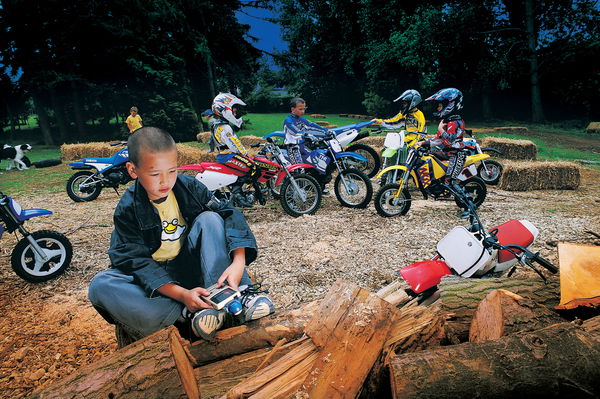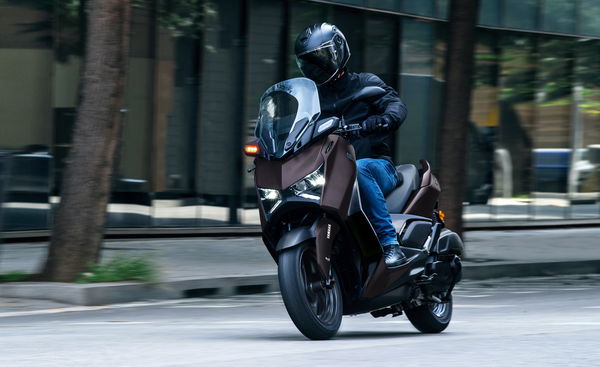Top 10 tips to stop you crashing
New to biking? Here's a head start with Visordown's guide to staying sunny-side up
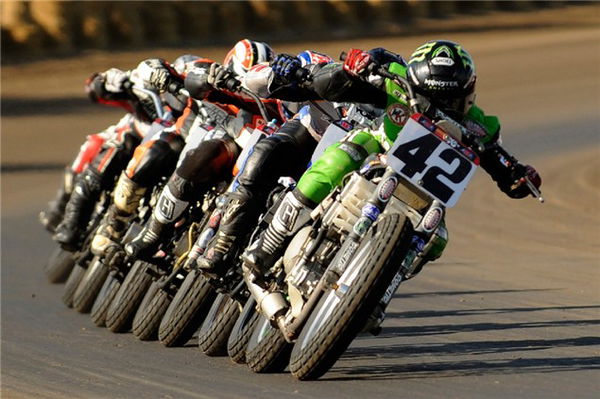
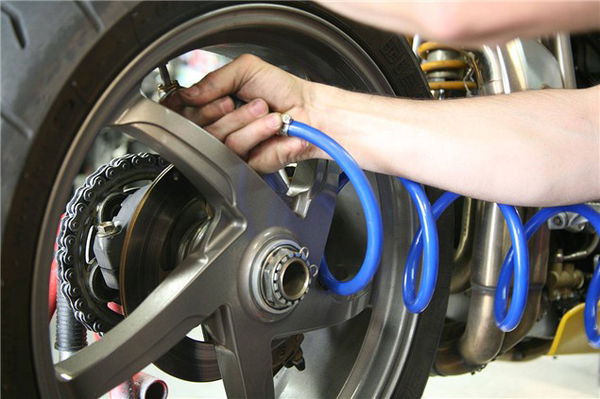
Keep your machine in tip-top condition
FALLING OFF A motorcycle is never an enjoyable experience - even a low-speed tumble in a car park can be enough to knock some people's confidence.
Parting company with your pride and joy at higher speeds can result in a fair bit more drama for both bike and rider.
So we've compiled our Top 10 tips novices should keep in mind when they're out on the road. Some you'll probably have already been taught on your training course, while others may provoke a little more thought.
Remember, when you're out on the road you're thinking not just for yourself, but for every other bozo, too. Defensive riding's the key to two-wheel survival, and it's a skill that's cultivated with practice over time. Want to know more about it? Get yourself along to an advanced skills school for a weekend. It'll be money well spent.
The tips are aimed at sensible novices. If you're a newcomer with no experience, who's bought a GSX-R1000 after passing your test, with a view to racing anyone who crosses your path, then you may be better off looking here.
1. Keep your machine in tip-top condition
Give yourself the best chance of staying upright by keeping on top of your bike maintenance.
As you learned on your training course, carry out your daily machine checks to make sure everything's working; wouldn't you feel a prat if someone rear-ended you at night because your tail light bulb had blown?
Keep an eye on bigger things, too. Tyres in good condition with a decent amount of tread depth, inflated to the correct pressure will give the rider much better feedback than rubber that's not.
Remember, your bike's tyres will need time to warm up to operating temperature for optimum grip. This fluctuates according to ambient and road temperature and riding style.
If in doubt, read the owner's manual or consult your local dealer for advice.
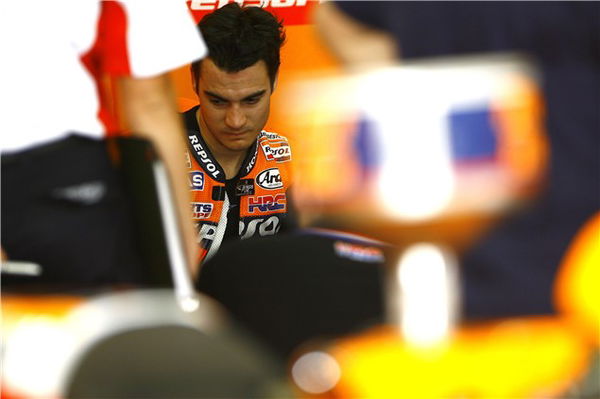
Fit to ride?
YOU'VE HAD a blazing row with your partner, the tax bill's just arrived, the cat's deposited in your new Arai - time to go for a spin to let off steam? Probably not.
Even the world's best motorcycle racers don't perform well if their mind's not focused on the job, so launching out for a spirited ride to quell your anger probably isn't a wise move for anyone, especially if you're new to the game.
The same's to be said for being overtired, hungover or just plain ill.
Stay inside, calm down/get better and then enjoy your ride.
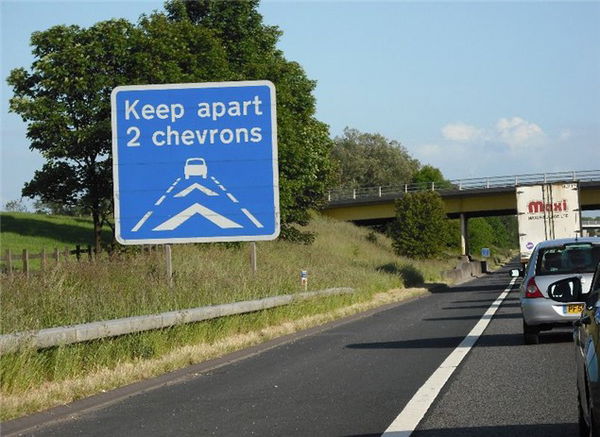
Keep your distance
RIDING TOO close to the vehicle in front cuts down a rider's braking distance, reduces visibility and also prevents other motorists from making sight of you.
Keep at least a two-second gap between your machine and the vehicle in front. Allow four seconds or more if the road's wet, visibility is poor, or you're following a high-sided vehicle.
Not sure how to do it? Picked a fixed point in the road (the blue sign in the picture, for instance), start counting when the vehicle in front passes it. If you've reached it before you've counted ONE THOUSAND, TWO THOUSAND then you're too close. Drop back.
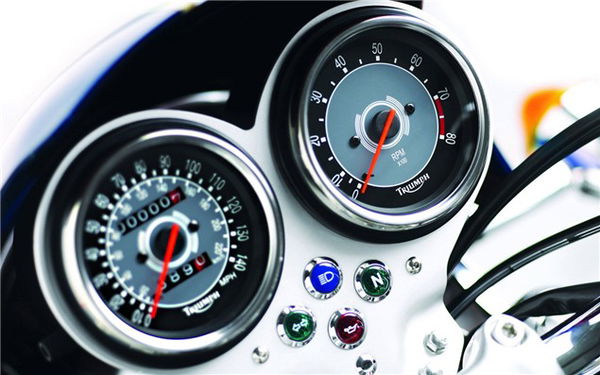
Keep an eye on the speedo
WE'VE ALL BEEN THERE: You glance down at the clocks only to find you're doing almost double the posted speed limit without knowing it.
The speed at which a motorcycle's travelling can be be deceptive. Brisk acceleration, coupled with a liberal smattering of new rider excitement can result in a novice substantially topping the speed limit without even knowing.
Naturally, any increase in speed above the posted limit also boosts the chances of an accident and of getting nicked.
Aim to stay within the speed limit at all times by keeping regular checks on the clocks, which in turn means keeping an eye on the speed limit signs.
There's plenty of time for faster riding when you're more experienced.
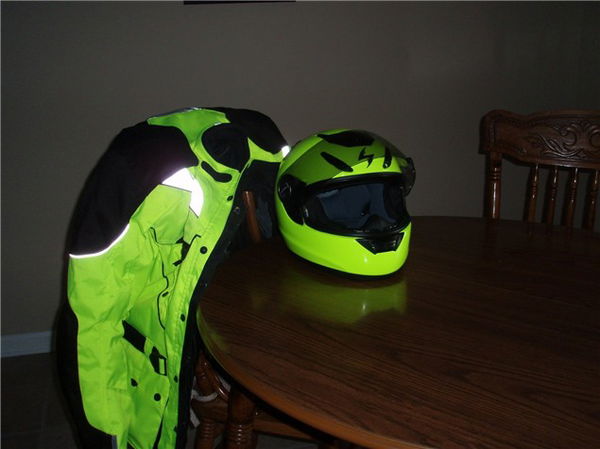
Wear the right kit
THE RIGHT sort motorcycle gear will help save your skin in a crash, but good quality kit can also help reduce the chances of an accident even before it's started.
Research has shown that riders who wear brightly coloured helmets and protective clothing substantially reduce the chances of being involved in an accident involving another motorist. If you're not that keen on the DayGlo look then opt for a bright helmet and clothing.
But all the dayglo kit in the world won't save your bacon if a car driver in a side road can't see you because you're obscured from his line of sight. Think about positioning your bike for maximum visibilty, so you can see them and they can see you. We're back to defensive riding again, aren't we?
Moreover, quality kit that keeps the rider warm and dry also helps them keep alert in wet and cold weather, giving better reaction times than a motorcyclist that's soaking and numbed to the core. Look for Goretex, or similar breathable membranes when buying.
It's also worth considering fitting an anti-mist shield in your helmet, like Fog City. These reduce 'misting-up', increasing a rider's visibility.

Practice makes perfect
GO TO any local bikers' meet and you're likely to see some experienced riders with little or no slow control skills.
Wending your way through a busy car park, or town centre is a fine art, so keep your bike skills sharp by practising them as often as you can.
Ideally, find a disused road, airfield or car park to polish up your emergency braking and clutch control skills. It's also great way to acclimatise yourself to a new bike.
Run through the braking sequences you were taught by your instructor to keep it smooth and steady. A good emergency stop should never look too dramatic.
Try placing a couple of objects on the floor to practice figure of 8s, focusing on what you're riding around while balancing throttle, clutch and back brake.
After a while the skills will become second nature, which means you're less likely to go grabbing a massive fistful of front brake when if you need to pull up quickly. It'll also mean you can look cool when riding, feet-up, into your local bike meet.

Riding in a group
RIDING WITH the right bunch of people in a group can be a wonderful experience. But if you're unlucky enough to be thrown in the deep end, with a bunch of nutters looking for a race on a sunny Sunday afternoon, then we'd suggest going it alone.
It's difficult enough learning to get comfortable on public roads without some egotistical twat chopping your nose off at every turn and pulling unexpected manoeuvres in an attempt to show off to the newbie.
Pick a sensible mate from which to learn; someone who you respect for the right reasons. Enjoy developing your skills at your own pace, not theirs.
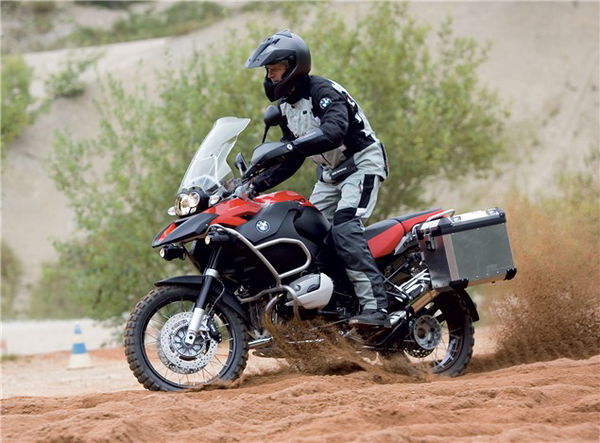
Additional training
DESPITE THEIR reputation for being tedious and run by a bunch of old farts on BMWs, advanced riding courses are a great way of furthering your riding skills.
A plethora of good motorcycle training companies now offer advanced and pass plus courses, the latter of which are specifically tailored for new riders.
As we've already mentioned, defensive riding is the name of the game and what better way to learn than on a advanced skills course? You'll learn all about road positioning, cornering, counter-steering, braking techniques and how to overtake safely, as well as other vital stuff overlooked on your DAS training course. Believe me, it's far more fun than sat in bed with a copy of 'Roadcraft'.
If that doesn't sound like your bag then what about an off-road course? BMW run an excellent school in Wales, where riders get to learn all about riding on dirt, how a bike feels when it slides and, usually, what it feels like to fall off.
And it's bloody good fun.
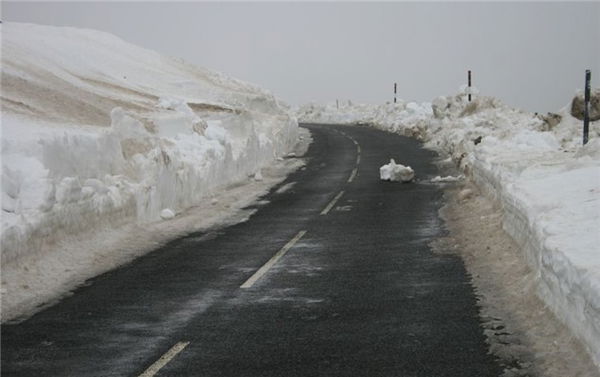
Weather
THERE'S A certain motorcycle news website that gladly extols the benefits of riding a motorcycle in the snow. This, as we all know, is utter crap.
In short, taking to the road when the gritters are out is a sure-fire way of knackering your bike and probably yourself.
Black ice, cold tyres, poor visibility and a serious lack of grip most of the time means a hard-hitting faceplant is not so much 'if' but 'when'. Now add a healthy dose of clueless car drivers attempting the same feat and we think you get the picture.
Same rules apply for torrential rain and high winds.
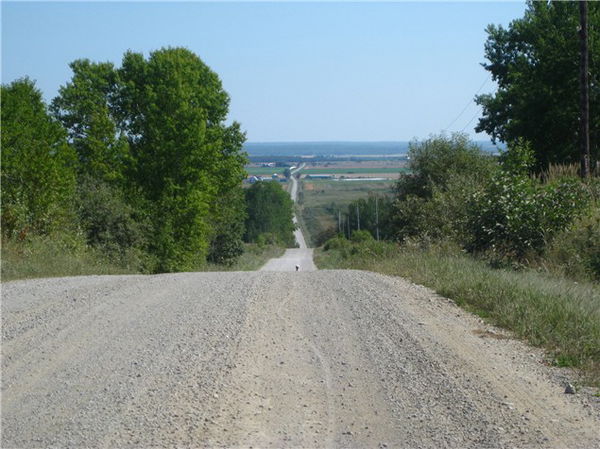
Road surface, road surface, road surface
A LACK OF attention to the ever-changing road surface is one of the most common reasons many new riders fall from their machines.
A slick of gravel strewn across the middle of the road, or a patch of wet leaves under a tree will usually cause no problem for a car driver, but can prove the undoing of any motorcyclist. Balancing on just two wheels, rather than four, motorcycle tyres rely heavily on good road surfaces for grip when accelerating, braking and cornering.
Scan the road ahead for changes in road surface, looking out for; draining covers, slippery tarmac, gravel, wet leaves and the biker's favourite - diesel spills.
Any dodgy road conditions should be treated with caution. Avoid braking, acceleration or, if you can help it, cornering. Judicious use of the back brake is far better than grabbing a handful of front.
A day or two at an off-road school will really help develop your skills to tackle this sort of occurance.
